
Helsinki is the capital and most populous city in Finland. It is on the shore of the Gulf of Finland and is the seat of southern Finland's Uusimaa region. About 684,000 people live in the municipality, with 1.26 million in the capital region and 1.6 million in the metropolitan area. As the most populous urban area in Finland, it is the country's most significant centre for politics, education, finance, culture, and research. Helsinki is 80 kilometres (50 mi) north of Tallinn, Estonia, 400 kilometres (250 mi) east of Stockholm, Sweden, and 300 kilometres (190 mi) west of Saint Petersburg, Russia. Helsinki has significant historical connections with these three cities.

Espoo is a city in Finland. It is located to the west of the capital, Helsinki, in southern Uusimaa. The population is approximately 320,000. It is the 2nd most populous municipality in Finland. Espoo is part of the Helsinki Metropolitan Area, which has approximately 1.6 million inhabitants. Espoo is on the northern shore of the Gulf of Finland and borders Helsinki, Vantaa, Kirkkonummi, Vihti and Nurmijärvi. The city includes the enclave of Kauniainen. Espoo covers an area of 528 square kilometres (204 sq mi). Espoo is a bilingual municipality with Finnish and Swedish as its official languages. The population consists of 70% Finnish speakers, 6% Swedish speakers, and 24% speakers of other languages, well above the national average.
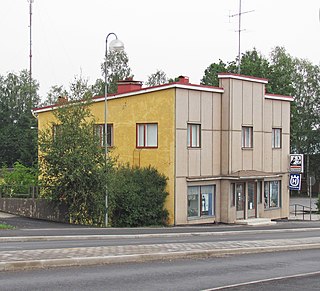
Pyhäjärvi is a town and municipality in the south of Northern Ostrobothnia region, Finland. Pyhäjärvi also borders the Northern Savonia and Central Finland regions. The town belongs to the subregion of Nivala–Haapajärvi. Its seat is in Pyhäsalmi.
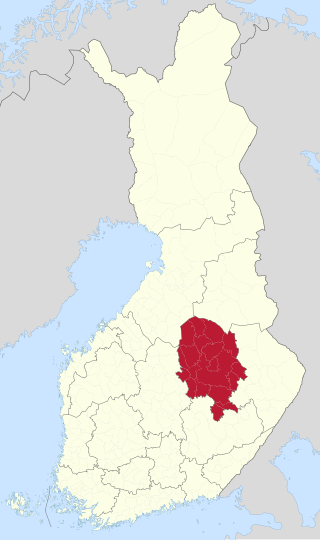
North Savo is a region in eastern Finland. It borders the regions of South Savo, Central Finland, North Ostrobothnia, Kainuu, and North Karelia. Kuopio is the largest city in the region and Lake Kallavesi is the largest lake in the region.

Hailuoto is a Finnish island in the northern Baltic Sea and a municipality in Northern Ostrobothnia region. The population of Hailuoto is 924, making it the smallest municipality in Northern Ostrobothnia and the former Oulu Province in terms of population. The municipality covers an area of 205.65 km2 (79.40 sq mi) of which 1.70 km2 (0.66 sq mi) is inland water. The population density is 4.49/km2 (11.6/sq mi). Of all the Finnish sea islands, Hailuoto is the third largest after Fasta Åland and Kimitoön.
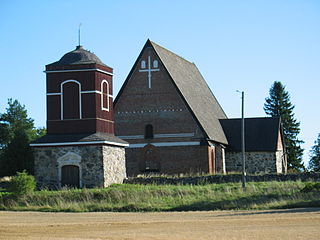
Hattula is a municipality of Finland. It is part of the Tavastia Proper region and until 2010 it was located in the province of Southern Finland. Hattula is almost completely surrounded by Hämeenlinna, only in the north it shares the border with Valkeakoski and Pälkäne on the Pirkanmaa region side.

Haukipudas is a town and former municipality of Finland. It was located in the province of Oulu and is part of the Northern Ostrobothnia region. Its shore runs along the Gulf of Bothnia, with the river Kiiminkijoki running through the province. Along with Kiiminki, Oulunsalo and Yli-Ii municipalities it was merged with the city of Oulu on 1 January 2013.

Keitele is a municipality of Finland.

Kiuruvesi is a town and municipality of Finland located in the Northern Savonia region. The municipality has a population of 7,370 and covers an area of 1,422.90 square kilometres (549.38 sq mi) of which 94.79 km2 (36.60 sq mi) is water. The population density is 5.55 inhabitants per square kilometre (14.4/sq mi). Neighbour municipalities are Iisalmi, Pielavesi, Pyhäjärvi, Pyhäntä and Vieremä. The municipality is unilingually Finnish.

Nagu is a former municipality and parish of Finland. On 1 January 2009, it was consolidated with Houtskär, Iniö, Korpo and Pargas to form the new town of Väståboland. On 1 January 2012 the name Väståboland was changed to Pargas.

Pielavesi is a municipality of Finland. It is part of the Northern Savonia region. The municipality has a population of 3,994 and covers an area of 1,406.51 square kilometres (543.06 sq mi) of which 253.27 km2 (97.79 sq mi) is water. The population density is 3.46 inhabitants per square kilometre (9.0/sq mi). The municipality is unilingually Finnish.

Pihtipudas is a municipality of Finland. Pihtipudas is known for the annual javelin carnival and for Lauri "Tahko" Pihkala, the inventor of Pesäpallo, the Finnish variant of baseball.
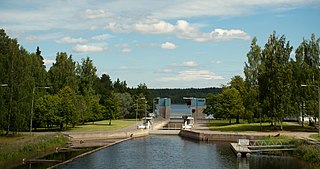
Tervo is a municipality of Finland. It is located in the province of Eastern Finland and is part of the Northern Savonia region. The municipality has a population of 1,400, making it Northern Savonia's least populous municipality. It covers an area of 494.30 square kilometres (190.85 sq mi) of which 146.52 km2 (56.57 sq mi) is water. The population density is 4.03 inhabitants per square kilometre (10.4/sq mi).

The Hietaniemi cemetery is located mainly in the Lapinlahti quarter and partly in the Etu-Töölö district of Helsinki, the capital of Finland. It is the location for Finnish state funeral services and is owned by the Evangelical Lutheran Church of Finland.

Lauttasaari is an island in Helsinki, Finland, about 3 kilometres (1.9 mi) west of the city centre. Together with some surrounding unpopulated small islands, Lauttasaari is also a district of Helsinki. With 23,226 residents as of 2017, the island is Finland's second largest by population, after Fasta Åland. Its land area is 3.85 km2.

Leo Makkonen is a Finnish Orthodox prelate who serves as Archbishop of Helsinki and All Finland. He is the head of the Finnish Orthodox Church.

Angelniemi is a former municipality of Finland. It became part of Halikko in 1967. It was located on partly on the continent by the Halikonlahti Bay and partly on Kimito Island and is still nowadays the only part of the island where Finnish is the primary language. Today the population of the area is 398, but it rises during the summer because of the summer cottages.

Salmi is a rural locality in Pitkyarantsky District of the Republic of Karelia, Russia. Municipally, it is incorporated within and serves as the administrative center of Salminskoye Rural Settlement of Pitkyarantsky Municipal District.

Kimitoön is a municipality and island of Finland. It was created on 1 January 2009, when the municipalities of Dragsfjärd, Kimito and Västanfjärd were consolidated into a single municipality.
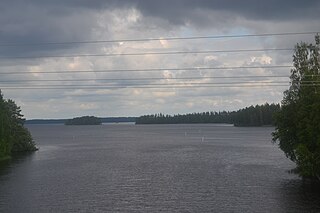
Pielavesi is a large lake in the Kymijoki main catchment area in Northern Savonia, Finland. With a surface area of 110.098 km², it is 29 meters deep at its deepest point. It is situated in the municipality of Pielavesi.





















